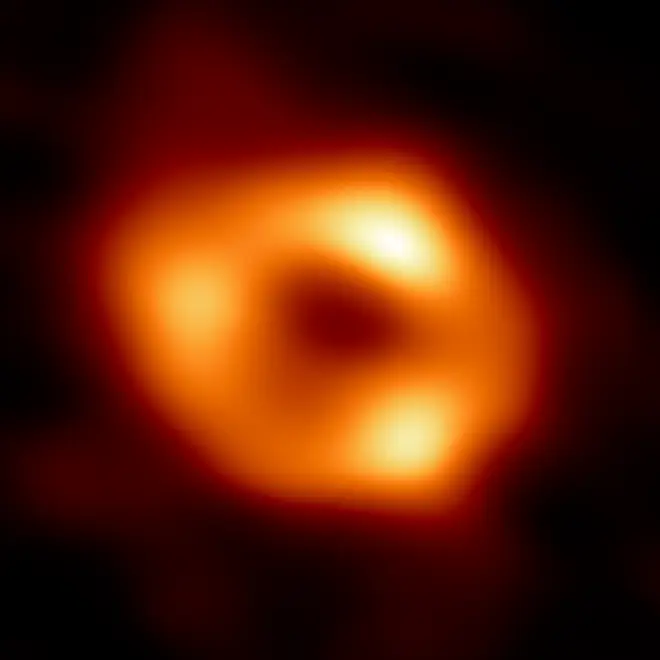
Clive Bull 1am - 4am
12 May 2022, 17:26

The first image of the supermassive black hole at the centre of the Milky Way galaxy has been revealed by astronomers.
The wild but fuzzy colourised image was unveiled on Thursday from the international consortium behind the Event Horizon Telescope.
Previous attempts to capture the fascinating object had failed as the black hole was too jumpy to get a good picture.
The black hole was described as the "gentle giant in the centre of our galaxy" by The University of Arizona's Feryal Ozel, who announced the new image.
The Milky Way black hole is called Sagittarius A*, near the border of Sagittarius and Scorpius constellations. It is four million times more massive than our sun.
This is not the first black hole image. The same group released the first one in 2019 and it was from a galaxy 53 million light-years away.
Read more: 'My gang rape fear': Stella Creasy tells of sex harassment hell at Cambridge
Read more: Sadiq Khan has an 'open mind' and is 'eager' to debate decriminalising cannabis in UK
Astronomers believe nearly all galaxies, including our own, have these giant black holes at their centre, where light and matter cannot escape, making it extremely hard to get images of them.
The image was produced by a global research team called the Event Horizon Telescope (EHT) Collaboration, using observations from a worldwide network of radio telescopes.
“We were stunned by how well the size of the ring agreed with predictions from Einstein’s Theory of General Relativity," said EHT Project Scientist Geoffrey Bower from the Institute of Astronomy and Astrophysics, Academia Sinica, Taipei.
"These unprecedented observations have greatly improved our understanding of what happens at the very centre of our galaxy, and offer new insights on how these giant black holes interact with their surroundings.”